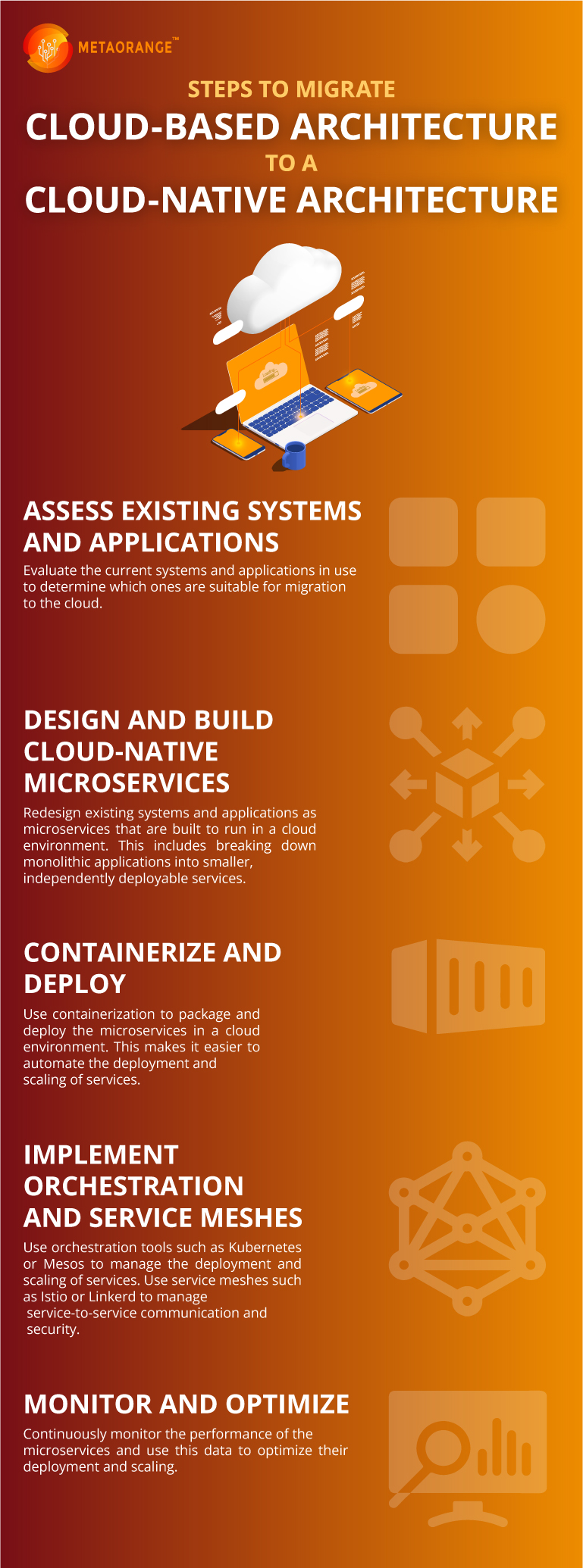The first step is to analyze your existing apps and learn about their limits. If you already have any other apps, you may use those to gauge the new system’s operational worth.
you’ll see the big picture of your apps and how they work together, which will help you identify where you stand and what steps you need to take to get to where you want to be.
The next is redesigning everything in the application as per the cloud-native architecture. It includes everything from breaking down monolithic applications into different deployable services.
To make a modification or add a new feature, it is sufficient to modify a single microservice. Redesigned architecture to focus on developer data and made each logical group of entities into a service with write/read access just for itself.
Containerized services should employ the serverless paradigm whenever possible. Additionally, the build, test, and deploy processes should be entirely automated. By containerizing services, it ensures that microservices do not interfere with one another.
Moreover, containers prevent programs from using up all of the host’s shared resources, while also enabling the use of multiple instances of the same service.
Container orchestration technologies are used to manage the complex life cycles of containers. Container orchestration systems handle resource management, load balancing, restart scheduling after an internal failure, and provisioning and deploying containers on server cluster nodes.
Last but not least, is monitoring the application after the migration. You can continuously monitor and use the different data for migration, scaling, and deployment of cloud-based architecture to a cloud-native architecture.
The needed optimization is done to integrate the new features, and technologies making the cloud-based architecture into a cloud-native architecture.

LEARN MORE: Cloud Transformation Services of Metaorange Digital
Copyright © 2024 metaorangedigital. All Right Reserved